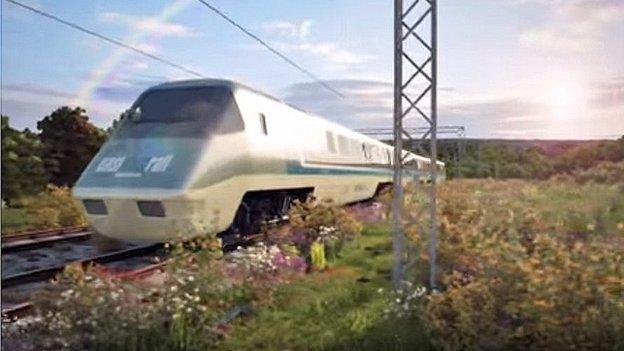East-West Rail: A simple guide to the Cambridge-Oxford project
- Published
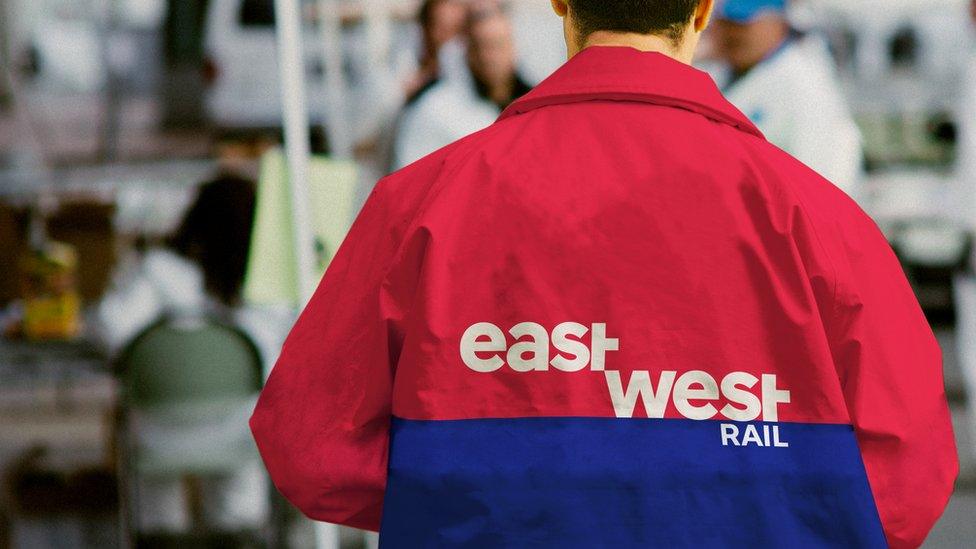
The East-West Rail link is designed to link Oxford with Cambridge
At an expected cost of about £5bn, the East-West Rail project will be one of the UK's biggest transport infrastructure schemes. But as consultation about the proposals continues, the BBC asks what is planned and what it could mean for those living along the route.

What is the project?
The aim of the project is to connect the university cities of Oxford and Cambridge by the end of the decade.
It will be done in three stages, with the first aiming to have trains running between Oxford and Milton Keynes by 2025.
Next would be the creation of a connection for two trains an hour from Oxford to Bedford.
The final stage would be to complete the journey to Cambridge.

Why is it being done?
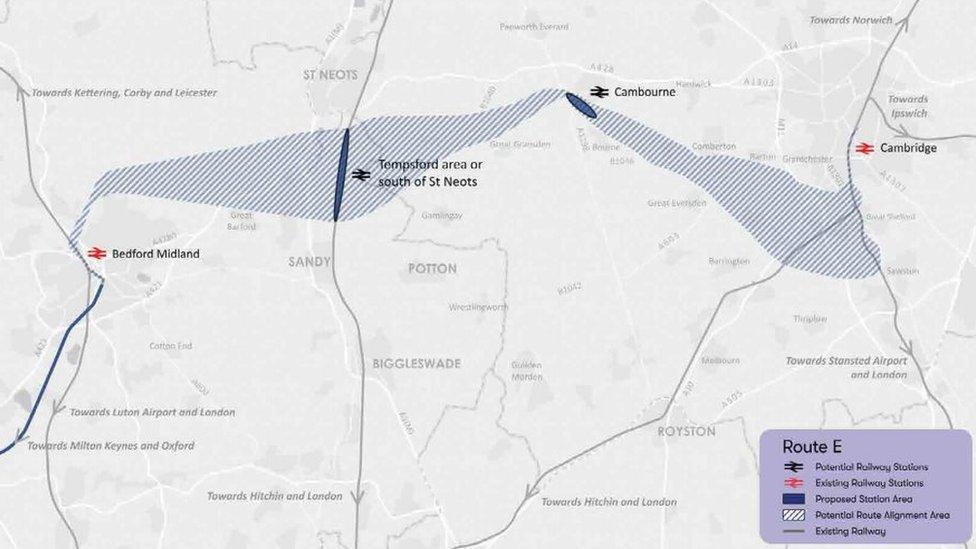
A diagram of the proposed "Route E" between Bedford and Cambridge, chosen after an earlier consultation
The East-West Rail Company (EWRC) was set up by the Department for Transport in 2018 to help deliver the project.
EWRC said the plan would be to link "communities to job opportunities, access to new homes and everyday connections with family and friends".
It claims that the rail service would help connect science parks, universities and industry and there would be cheaper travel between its two end destinations.

What stage are we at?
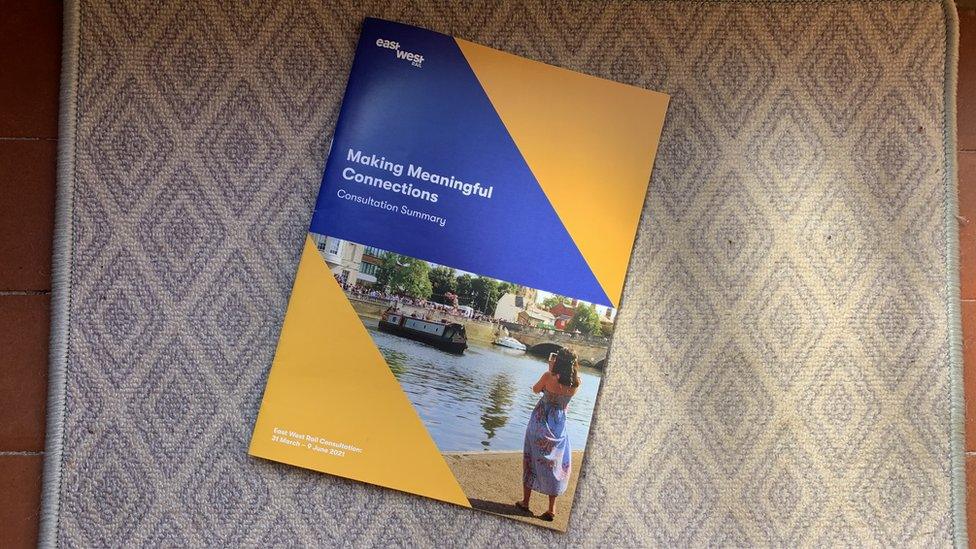
The East-West Rail consultation booklet has been sent out to the public to ask for their feedback
A second consultation was launched at the end of March and will run until 9 June.
Leaflets have been sent to about 250,000 homes and businesses seeking their views on the plans.
The majority of questions being asked by EWRC relate to the proposals between Bedford and Cambridge and focus on the main stations, the idea of new stations in between and a new railway and junction between Harlton and Hauxton in south Cambridgeshire.
Views are also being sought on improvements between Oxford and Bicester and Bletchley and Marston Vale, south-west of Bedford.

Where will the route go?
Following a previous consultation in 2019 a plan EWRC marked as "Route E" was chosen as the preferred route between Bedford and Cambridge.
It stretches from Bedford to an area around Tempsford and St Neots on the Cambridgeshire-Bedfordshire border, on to Cambourne, then finally to Cambridge.
According to EWRC, external the plan received support, in part, because it served the existing Bedford station.
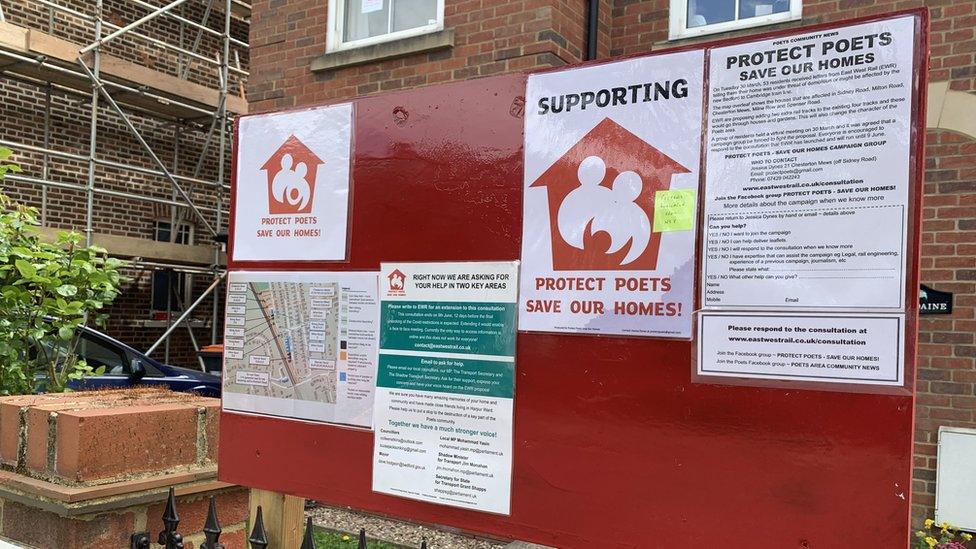
People in the Poets area of Bedford have been told their homes may be demolished
About 60 residents near Bedford station have been told they could face their houses being demolished to make way for the planned development.
Letters have also been sent to some living in south Cambridgeshire, where a southern approach into the city of Cambridge has been chosen.
EWRC has said it has "aimed to minimise the negative impact this may have on people's homes and land but, inevitably with an infrastructure project of this size, there will be some people who could be directly affected".
"We'll continue to work to mitigate any impacts we cannot avoid and work closely with people who could be affected."

What are some of the criticisms?
Some, including the group Bedford For A Re-Consultation, claim the first consultation by EWRC "wasn't adequately communicated".
Further down the line, in Cambridgeshire villages, residents have begun a campaign which supports a northern approach into Cambridge.
The campaign states a northern route into Cambridge would, among other arguments, have at least seven times fewer residents living within 200m (656ft) of the line and less impact on the environment.
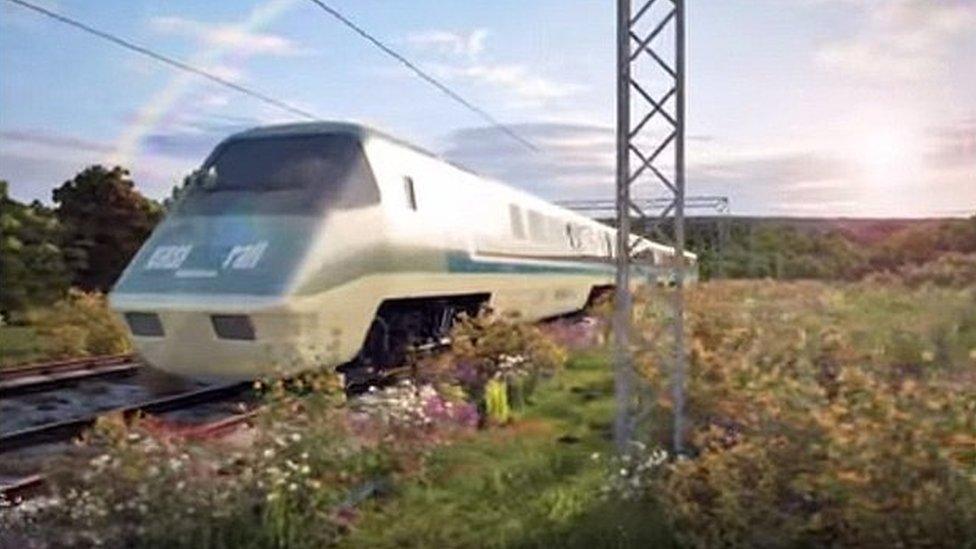
The current plan for the project also includes the use of diesel engines, which groups such as Cambridge Smarter Transport have argued against.
Edward Leigh, from the group, said "the line must be fully electrified from the outset".

What does the EWRC say in response?
EWRC said it believed a southern approach into Cambridge "would require the demolition of no more than five homes and businesses". This is far less, it says, than the 39 to 85 properties that would be at risk if a northern approach was chosen.
It stated that "20% more people live within 200m of the northern approach compared to the southern" and the southern route would mean "fewer flood plains to navigate".
The company said more than 3,500 people went to events in the 2019 consultation, and it received nearly 7,000 responses to the consultation.
"The level of response was significantly higher than for other projects and recent consultations in the area," it added.
EWRC said it was considering electrification for when the line is fully open between Oxford and Cambridge.
But it said it was "proposing a temporary solution for the first section of East-West Rail between Oxford and Bedford, which could be diesel powered, so that we can get services up and running on East-West Rail as soon as possible and help to reduce the number of cars on the roads sooner".

Find BBC News: East of England on Facebook, external, Instagram, external and Twitter, external. If you have a story suggestion email eastofenglandnews@bbc.co.uk
- Published23 January 2021

- Published30 January 2020
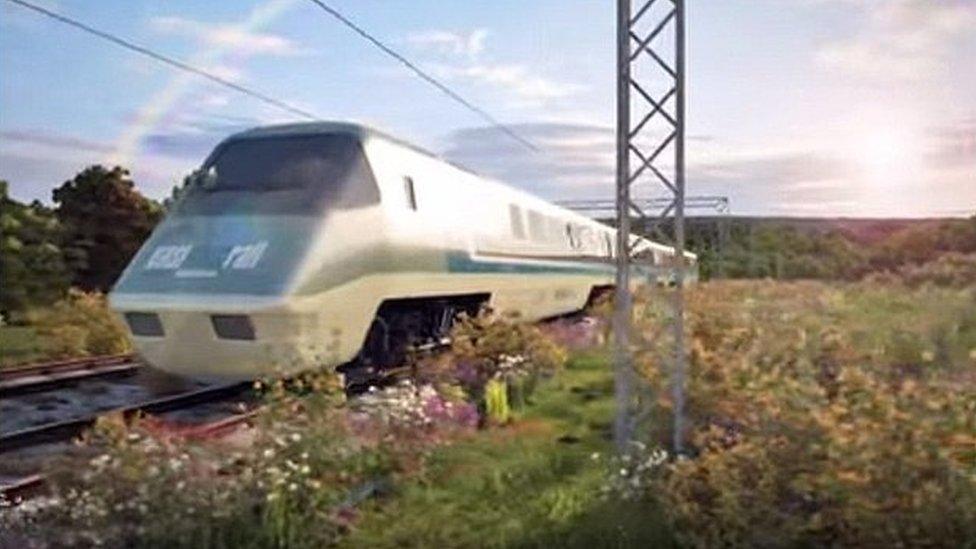
- Published29 January 2019

- Published27 July 2018
